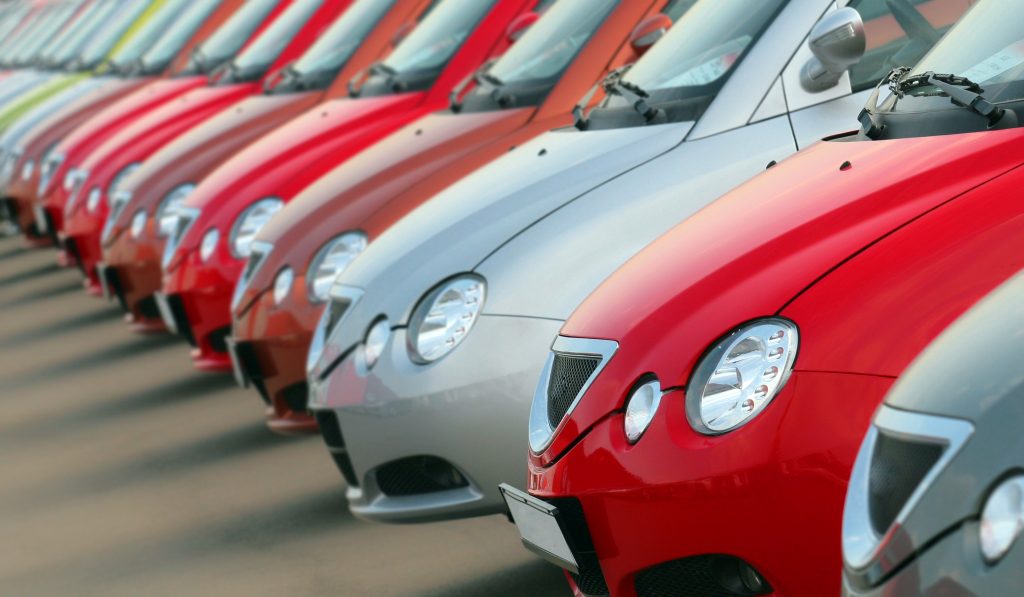Editorial by NFIB Oregon State Director Anthony Smith
Earlier this year, the California Air Resources Board (CARB) voted to ban the sale of new gasoline powered cars, trucks, and SUVs by 2035. Like many other industries, California’s vehicle market is the largest in the nation, so it’s no surprise that this change in policy will have major impacts for auto makers and drivers in other states, whether they adopt their own versions of the rules or not.
“California now has a groundbreaking, world-leading plan to achieve 100% zero-emission vehicle sales by 2035,” said California Gov. Gavin Newsom. “It’s ambitious, it’s innovative, it’s the action we must take if we’re serious about leaving the planet better off for future generations.”
Not to be outdone by our neighbor to the south, Oregon is looking to adopt similar rules. The Oregon Department of Environmental Quality (DEQ) plans to move forward with its own regulations later this month. According to an official statement from DEQ, “Oregon is moving forward with a proposed rule similar to California’s Advanced Clean Cars II regulation, which is vital to help achieve greenhouse gas emission reduction targets across the state and result in improved air quality and public health outcomes. The regulation will lead to the production of high-quality electric vehicles and ensure long-lasting emissions benefits. It will also support the development of a robust used zero-emission vehicle market, which will help to advance equitable access to clean mobility solutions and related emissions reductions in low-income and frontline communities.”
Environmental arguments aside, will this “ambitious” and “innovative” approach really result in more “high-quality electric vehicles” and a “robust used zero-emission vehicle market”? Have public officials (or their communications teams) tried to buy a vehicle recently?
Due to several economic factors, including high inflation, labor shortages, and supply chain issues, new car dealers have had very low inventory for the last couple of years. Computer chips alone have made new vehicles scarce. Electric vehicles (EVs) and plug-in hybrids (PHEVs) use components that can be even more difficult to source. The new car shortage has impacted the used car market as well, with used car prices still near record highs. Great if you’re selling. Not so great if you’re buying.
Policy makers at the state and federal level have already created financial incentives to motivate car buyers to go electric – mostly in the form of tax credits and rebate programs. Oregon offers a standard rebate of $2,500 for any new EV or PHEV under $50,000 and a stacking rebate for certain Oregonians (depending on verified income and household size) of up to $5,000 for a total of $7,500.
A federal tax credit of up to $7,500 per new EV or PHEV has been in place since 2008. It underwent significant changes in the federal Inflation Reduction Act of 2022 (and for the first time now allows a credit of up to $4,000 for certain used EVs). Most notably, the list of qualifying vehicles has drastically decreased due to new requirements that stipulate final assembly of the vehicle must occur in North America and battery components must be made in a country that has a U.S. free-trade agreement (this gets extremely complicated.)
Media reports typically highlight that these state and federal incentives work together, for a combined tax credit/rebate savings of up to $15,000 per qualifying vehicle. What they don’t mention is that few Oregonians would ever qualify for the full $15,000. The federal tax credit is non-refundable, which means that a taxpayer must have a federal tax liability to offset in order to receive the full credit – that’s probably at least a six-figure income for a family of four. To receive the full Oregon rebate, that same family of four must earn less than $111,000 per year, so it’s a tight window for taxpayers to be in the sweet spot where they can maximize both. Realistically, most Oregonians will likely qualify for around $7,500 to $10,000 in combined credits and rebates.
Bottom line: EVs and PHEVs are still expensive, even with the incentives that are currently available to consumers – and in most cases, buyers will have to wait several months and/or until tax season of next year to be reimbursed for their up-front, out-of-pocket costs. This can be difficult for households and businesses already experiencing budgetary pressures.
EV mandates might feel good and score political points in some circles, but until economic conditions improve, and the bigger market issues are resolved, elected officials in Oregon and California are likely setting themselves up for failure – or even worse for them, a very angry electorate. Voters are unlikely to be sympathetic to leaders who limit the availability of historically reliable forms of travel – and then discourage people from charging their vehicles because of an unreliable and overburdened energy grid.
Should Oregon implement California’s vehicle emission standards regulating greenhouse gas emissions? NFIB is asking members to answer this question (and others) on the official 2023 NFIB Oregon State Member Ballot. NFIB members can log in to NFIB.com to vote.
###

